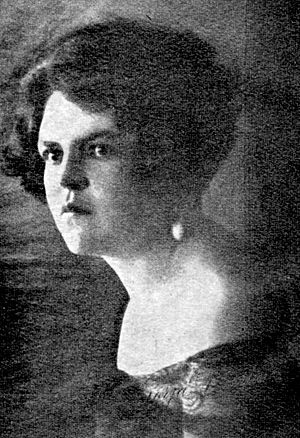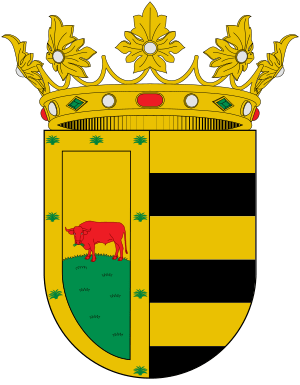Luz Elisa Borja Martínez facts for kids
Quick facts for kids
Luz Elisa Borja
|
|
|---|---|
 |
|
| Born | Luz Elisa Borja Martínez 15 May 1903 Riobamba, Ecuador |
| Died | 10 July 1927 (aged 24) Riobamba, Ecuador |
| Occupation | Poet, pianist, painter, sculptor |
| Nationality | Ecuadorian |
| Literary movement | Modernismo |
| Notable works |
|
Luz Elisa Borja Martínez (born May 15, 1903 – died July 10, 1927) was a very talented artist from Ecuador. She was a poet, a pianist, a painter, and a sculptor. She showed her artistic skills in many different ways.
Contents
The Life of Luz Elisa Borja
Luz Elisa Borja Martínez was born in Riobamba, Ecuador, in 1903. Her parents were Ricardo Borja León and Victoria Martínez Dávalos. Her family was well-known and had a rich history.
Because her family was wealthy, Luz Elisa had many chances to develop her artistic talents. She went to the San Vicente de Paúl college in Riobamba. This school was run by the Sisters of Charity.
Developing Artistic Talents
From a young age, Luz Elisa was a multidisciplinary artist. This means she studied many different art forms. She learned about poetry, music, painting, and sculpture. Some of her original artworks are kept at the Casa de la Cultura Ecuatoriana in Chimborazo Province.
During her short life, she wrote many poems and other works. After she passed away, her brother, Luis Alberto, published two books of her writings. These books were called Cofre Romántico and La Bella Durmiente.
The Poem "Quiero Llorar"
The book La Bella Durmiente includes a famous poem called "Quiero Llorar" (which means "I Mourn"). Luz Elisa wrote this poem in 1918 when she was only 15 years old. She wrote it because she was sad about the death of the head nun at her school.
This poem has seven stanzas, which are like verses in a song. Two of these stanzas later became the words for an Ecuadorian song called "Lamparilla." A musician named Miguel Ángel Casares Viteri created the music for it. He was inspired by the poem and also by the damage caused by a flood from the Chanchán River.
Becoming a Famous Poet
Luz Elisa became very successful and won awards in many Ecuadorian cities. Newspapers from other countries even wrote about her. They called her one of Ecuador's most brilliant poets. Because of her beautiful poetry, she became known as "La Alondra del Chimborazo." This means "The Lark of Chimborazo," like a singing bird from the Chimborazo region.
Artistic Influences
In Ecuador, Luz Elisa was influenced by a literary movement called Modernismo. This group included famous poets like Medardo Ángel Silva and Arturo Borja, who was her second cousin. She also admired international writers such as the French authors Charles Baudelaire and Stéphane Mallarmé.
When it came to music, Luz Elisa loved and played the works of famous composers. She especially enjoyed the music of Franz Liszt, Franz Schubert, and Ludwig van Beethoven.
Luz Elisa Borja passed away in Riobamba on July 10, 1927. She was only 24 years old. She was buried in the cemetery in her hometown.
Remembering Luz Elisa Borja
People in Ecuador have honored Luz Elisa Borja in several ways.
A Library in Her Name
The Casa de la Cultura Ecuatoriana in Chimborazo Province created a library named after the poet. This library is in a building that the City Council of Riobamba gave them on April 21, 1954. Luz Elisa's mother had left this building in her will. She wanted it to be used as a library and a place for cultural activities.
Street Named After Her
In her hometown of Riobamba, there is also a street named after Luz Elisa Borja. This helps people remember her contributions to art and culture.
The Song "Lamparilla"
The song "Lamparilla," which uses parts of her poem, is considered a classic in Ecuador. Many important singers and music groups in Ecuador have performed it. Famous singers from other countries have also sung this beautiful song.
See also
 In Spanish: Luz Elisa Borja para niños
In Spanish: Luz Elisa Borja para niños


